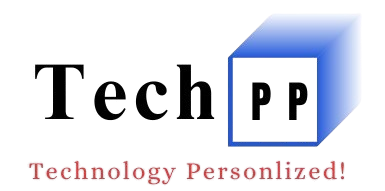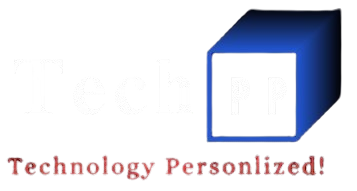Generative AI is rapidly reshaping how teams design products, automate workflows, and personalize experiences. For professionals, the edge now lies in moving from curiosity to capability building the judgment to choose use-cases and the skill to deliver working prototypes.
This guide curates high-quality programs that emphasize practical outcomes, portfolio artifacts, and credible certificates, so you can translate model capabilities into measurable business value in 2025.
Factors to Consider Before Choosing a Generative AI Course
Clarify your goal (builder, product owner, or strategist), match difficulty to your baseline, and pick a learning format you’ll finish (self-paced vs cohort). Check certificate credibility, project depth, and tool coverage (LLMs, vector DBs, RAG, governance).
Estimate your time and budget, then prioritize courses that include hands-on labs, evaluation methods, and case studies relevant to your industry.
Top Generative AI Courses to Launch Your Career in 2025
1) DeepLearning.AI — Generative AI with LLMs (Coursera)
Short overview: A practitioner-led pathway covering LLM fundamentals, prompt design, RAG, and evaluation. You’ll ship small but real prototypes, learning when to fine-tune versus retrieve, and how to monitor quality and mitigate failure modes.
Key highlights / What sets it apart: Certificate from a widely recognized AI training brand; strong focus on evaluation and guardrails; concise, applied labs.
Curriculum / Modules: LLM basics; prompt patterns; embeddings and vector stores; retrieval-augmented generation; function/tool calling; safety and evaluation; deployment options.
Ideal for: Product managers and developers wanting fast, applied momentum without heavy math.
2) Johns Hopkins University — Applied Generative AI Certificate
Short overview: A certificate track focused on end-to-end solution building—problem framing, prototyping, and evaluation. This generative AI course emphasizes real scenarios, from customer support to content operations, and documents decisions so solutions are reproducible and auditable.
Key highlights / What sets it apart: University-backed certificate; portfolio projects; attention to governance and risk; cross-functional framing for business impact.
Curriculum / Modules: Foundations of LLMs; prompt engineering; retrieval and orchestration; safety, privacy, and IP; metrics and red-teaming; capstone with business case.
Ideal for: Mid-career technologists and analytics leaders aligning GenAI with measurable outcomes.
3) Google Cloud — Generative AI for Developers (Skill Boost)
Short overview: Lab-heavy path using Vertex AI for model access, embeddings, and RAG pipelines. You practice chaining prompts, evaluating outputs, and instrumenting apps with production services you can carry into enterprise environments.
Key highlights / What sets it apart: Hands-on cloud labs; quick path from prototype to managed services; shareable completion credentials.
Curriculum / Modules: Vertex AI basics; embeddings and vector search; RAG blueprints; safety filters; evaluation; deployment patterns.
Ideal for: Engineers shipping PoCs on GCP with an eye toward scalability.
4) MIT Professional Education — Generative AI: From Models to Value
Short overview: A compact executive program that connects model capabilities to operating models, governance, and ROI. You map opportunities, score feasibility, and build an adoption plan covering people, process, and platform.
Key highlights / What sets it apart: Strategy toolkits; risk frameworks; peer learning; recognized certificate for leaders.
Curriculum / Modules: Landscape of models; use-case selection; data and platform choices; risk/governance; operating model; adoption roadmap.
Ideal for: Senior leaders shaping portfolio-level GenAI initiatives.
5) The University of Texas at Austin (McCombs) — Generative AI for Business Applications
Short overview: Business-first training that translates generative AI for business (GenAI) into measurable improvements across marketing, service, and operations. Includes hands-on work with Azure/OpenAI tools and a structured approach to prompt design, RAG, and workflow orchestration.
Key highlights / What sets it apart: Executive-friendly pace; concrete business playbooks; certificate signaling applied competence.
Curriculum / Modules: Generative AI fundamentals; prompt engineering; LLM orchestration; RAG; evaluation and guardrails; case studies; implementation plan.
Ideal for: Managers and product owners accountable for outcomes, not just experiments.
6) IBM — Generative AI Fundamentals (Coursera / Skills Network)
Short overview: A foundations-to-practice sequence covering prompt design, minor customizations, and responsible AI. You’ll complete guided labs and earn stackable credentials that demonstrate baseline proficiency to hiring managers.
Key highlights / What sets it apart: Modular micro-credentials; pragmatic labs; strong emphasis on responsible use.
Curriculum / Modules: GenAI concepts; prompting; embeddings; lightweight tuning; governance and ethics; mini-projects.
Ideal for: Beginners building confidence with industry-aligned badges.
7) Great Learning — Microsoft Azure Generative AI for Business
Short overview: A project-centric track using Azure OpenAI and workflow tools to deliver business-ready mini-apps. You practice RAG, evaluation, and deployment patterns that align with enterprise security and compliance needs.
Key highlights / What sets it apart: Portfolio-ready projects; Azure ecosystem alignment; certificate of completion.
Curriculum / Modules: Azure OpenAI services; promptflow/orchestration; RAG with vector DBs; evaluation and monitoring; business case capstone.
Ideal for: Practitioners standardizing on Azure who need tangible artifacts.
Conclusion
Generative AI skills grow fastest when you work on real projects, not just concepts. Choose a trusted GenAI course aligned with your goals, build and deliver a small solution within weeks, and measure its impact on cost, speed, or user experience so stakeholders can see tangible value.
Prioritize GenAI programs that teach evaluation techniques, guardrail implementation, and deployment patterns alongside rapid prototyping. With the right foundation and a consistent rhythm of small wins, you’ll be ready to scale responsible and resilient Generative AI capabilities across your workflows in 2025.


